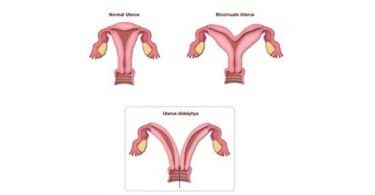A few months ago, I had suggested to the editors of Homeopathy Today a piece on mother and child resonance. They were delighted. I was delighted. And then I started thinking about an opening paragraph and I was stymied. How to introduce a topic like that? There really is no scientific understanding for it, no theoretical framework to explain it, no paragraph alluding to it in the Organon. Yet, we hear about it all the time—how a mother and child can need the same remedy at the same time, or how remedies seem to run in a family.
Let me share the case(s) that started our discussion about this.
A young mother called in. Her ordinarily sweet eight-month-old daughter was suffering terribly. She cried incessantly, as if “she were starving or desperate.” The mother was worried, exhausted, confused. The pediatrician found nothing organically or mechanically wrong with the baby during a regular exam.
To ease the child, the mother tried everything. She nursed her every one to two hours. Sometimes the baby would vomit, sometimes just cry hysterically. She cried to be fed, but when she was fed she would shake and scowl as if she were angry. She was inconsolable and her mother was at wit’s end. I asked her when it started and she said it had been going on for a little while and seemed to coincide with teething. I wondered if the baby showed any other strong emotions. Was she clingy? Was she easily frightened? Her mother said that she appeared to be afraid of their cat, hated being alone, did not like strangers, was very, very clingy and was only able to sleep on top of her mother. Was there anything else? The mother complained of an eruption on the child’s scalp and that the baby’s stool was hard.
Our first repertorization looked like this:
We gave her one dose of Silica 200c and waited for one week. And even though the repertorization looked solid and there was good reason to think it was a nice match for the child’s personality, there was minimal if any improvement.
So we went back to the drawing board and focused on the essential components. What was driving the mother to distraction was the baby’s inability to be consoled, to be fed, and her terrible crying. Did anything whatsoever give the baby comfort or relief? Only being rocked and held. I looked at the physical picture again with the mother. This time she offered a few new symptoms: the baby vomited after nursing and had diarrhea frequently. Wisdom is often a firm grasp of the obvious and I am reminded of this often in my practice.
Then, just to be sure, I repertorized it again, using different rubrics.
We prescribed one dose of Chamomilla 30c for three consecutive days. But we didn’t have long to wait. Within a few hours, the baby fell peacefully asleep. And in short order mom fell asleep, too. The results were quick and joyful. The baby relaxed, was less fearful, was able to nurse calmly. There was a brief, minimal relapse about three months afterward, which was effectively healed with one more dose of Chamomilla 30c.
Mom’s Time Has Come
I heard nothing further from them for about six months when the mother called in complaining of asthmatic respiration. It was a chronic condition that she had had since she was a little girl, but had gotten worse as she got older and resorted to allopathic drugs. She was currently on advair, once a day, and albuterol, prn.
She was 24 years old, married, had two children, a two-year old girl and the 8-month old in the previous case. She stayed at home with the children. She had originally gone to school to become a teacher with a specialization in early childhood. She seemed very settled in her life. To start, I asked her for her wish list. She responded, “To not be ridiculously allergic, to not be a bitch, and to not be asthmatic.”
I asked her about her asthma first. She explained that the difficulty breathing was constant, even with stillness, and it got worse with any exposure to animal dander. She complained of being super sensitive, especially her skin. Her asthma got worse with exercise, warm, wet weather, and exposure to allergens, and it got ameliorated with cold air, especially outside. She thought her asthma started when she was about 2 years old.
What happened at 2 years old, I asked her. She told me how her family had moved to a house that scared her terribly. In particular, she was terrified of her room. “I never felt safe there. It was super-haunted. The floors creaked in an awful way. I was afraid something would jump out of the shadows. Something evil.” She started having terrible nightmares and remembered going in to her parents’ room for comfort. But they insisted that she go back to her room.
“I think that’s when it got bad. I wasn’t safe and my parents rejected me. I was very upset with them.” In my notes I scribbled, “ailments from fright” and underlined it three times. I asked her to tell me more about herself emotionally. How did she handle upset as she grew older? She explained that she learned to protect herself from her own feelings. Any particular feelings, I asked? She said, “All of them, but especially sadness. I learned that wanting attention or comfort got me nowhere.” In our discussion, she came to see that the very thing she longed for most (succor), and she refused both to want or to receive. I asked her if this had anything to do with seeing herself as “bitchy?” She wasn’t sure, but she knew she needed to make sure things went her way. It made her feel safer.
Her physical symptoms were good and clear: She was thirsty all the time, she had green stools, she snored, she was chilly, she loved chocolate. We started repertorizing. The first and clearest symptom to me was the fact that her asthma was precipitated by fright. It was also characterized by suppressed anger and ameliorated by cold air.
We started with the following:
When I saw the repertorization shape up, I remember thinking to myself, “Oh, that’s just too trite.” And I proceeded to take the case again, using slightly different rubrics.
There was no arguing the evidence. We gave her Chamomilla 30c once a day for a week. She felt a strong and steady improvement. We spoke again after a month and she stated that the benefits had held. And although her breathing was better, she was still not ready to speak to her physician about titrating off the Advair, but was on her way. She was emotionally more grounded, less constricted emotionally, more open to affection, and her sleep was vastly improved.









